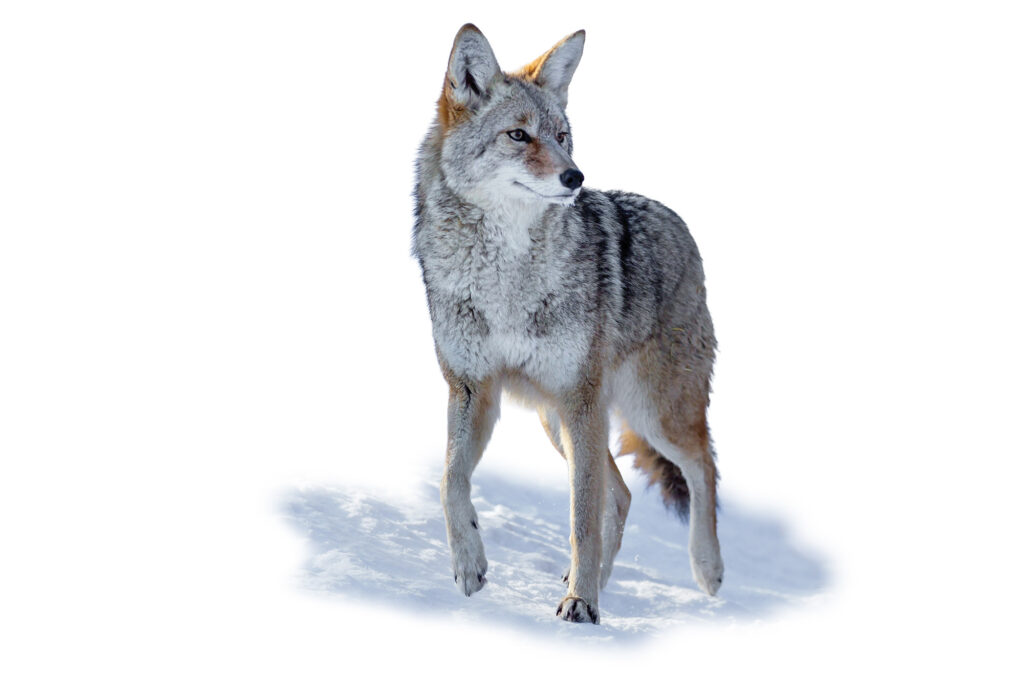 Conventional wisdom suggests that hunting reduces wildlife populations. But for coyotes, the opposite appears true—areas that allow hunting actually have more of these crafty canines, according to new findings by U wildlife biologist Austin Green HBS’16 PhD’22 and researchers from the University of New Hampshire, North Carolina State University, and the University of Illinois.
Conventional wisdom suggests that hunting reduces wildlife populations. But for coyotes, the opposite appears true—areas that allow hunting actually have more of these crafty canines, according to new findings by U wildlife biologist Austin Green HBS’16 PhD’22 and researchers from the University of New Hampshire, North Carolina State University, and the University of Illinois.
Using nearly 4,600 motion-triggered cameras across the U.S., including arrays Green maintains in the Wasatch Mountains and along the Jordan River, the team found coyote numbers were 97 percent higher in hunting zones. These protective animals have a unique response to population pressure.
“They’re such territorial animals that if you remove the most territorial one,” Green explains, “two or three take their place, start breeding, and you lead to actual increases in coyote population.”
This resilience stands in stark contrast to other predators like wolves and cougars. Even in Utah, where hunters can collect a $50 bounty for coyote ears, these adaptable animals continue to thrive—suggesting traditional control methods may need rethinking.



Comments
Comments are moderated, so there may be a slight delay. Those that are off-topic or deemed inappropriate may not be posted. Your email address will not be published. Required fields are marked with an asterisk (*).